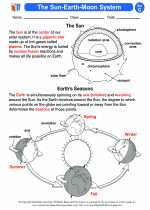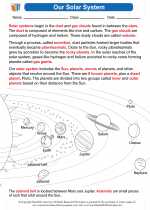Sunspots
Sunspots are temporary phenomena on the Sun's photosphere that appear as dark spots compared to surrounding regions. They are caused by interactions with the Sun's magnetic field and are often associated with solar activity such as solar flares and coronal mass ejections.
Formation of Sunspots
Sunspots are formed due to the magnetic activity on the Sun. The Sun's magnetic field can become concentrated in certain areas, inhibiting convection and causing those areas to be cooler and appear darker as compared to the surrounding regions.
Characteristics of Sunspots
- Dark in color compared to surrounding areas
- Appear in pairs or groups
- Can vary in size from a few hundred kilometers to tens of thousands of kilometers
- Associated with intense magnetic activity
Importance of Sunspots
Studying sunspots is important for understanding the Sun's behavior and its impact on space weather. Sunspots are closely linked to solar activity, and their study helps in predicting solar flares and other space weather events that can affect communication systems, satellites, and power grids on Earth.
How to Study Sunspots
To study sunspots, scientists use telescopes equipped with special filters to safely observe the Sun. They track the number, size, and location of sunspots over time to better understand the Sun's magnetic activity and its influence on space weather.
Study Guide
- What are sunspots? How are they formed?
- What are the characteristics of sunspots?
- Why are sunspots important to study?
- How do scientists study sunspots?
- What are some of the tools and methods used to observe and study sunspots?
◂Science Worksheets and Study Guides Seventh Grade. Our Solar System

 Activity Lesson
Activity Lesson
 Activity Lesson
Activity Lesson
 Worksheet/Answer key
Worksheet/Answer key
 Worksheet/Answer key
Worksheet/Answer key
 Worksheet/Answer key
Worksheet/Answer key
 Worksheet/Answer key
Worksheet/Answer key
 Vocabulary/Answer key
Vocabulary/Answer key
 Vocabulary/Answer key
Vocabulary/Answer key
 Vocabulary/Answer key
Vocabulary/Answer key
